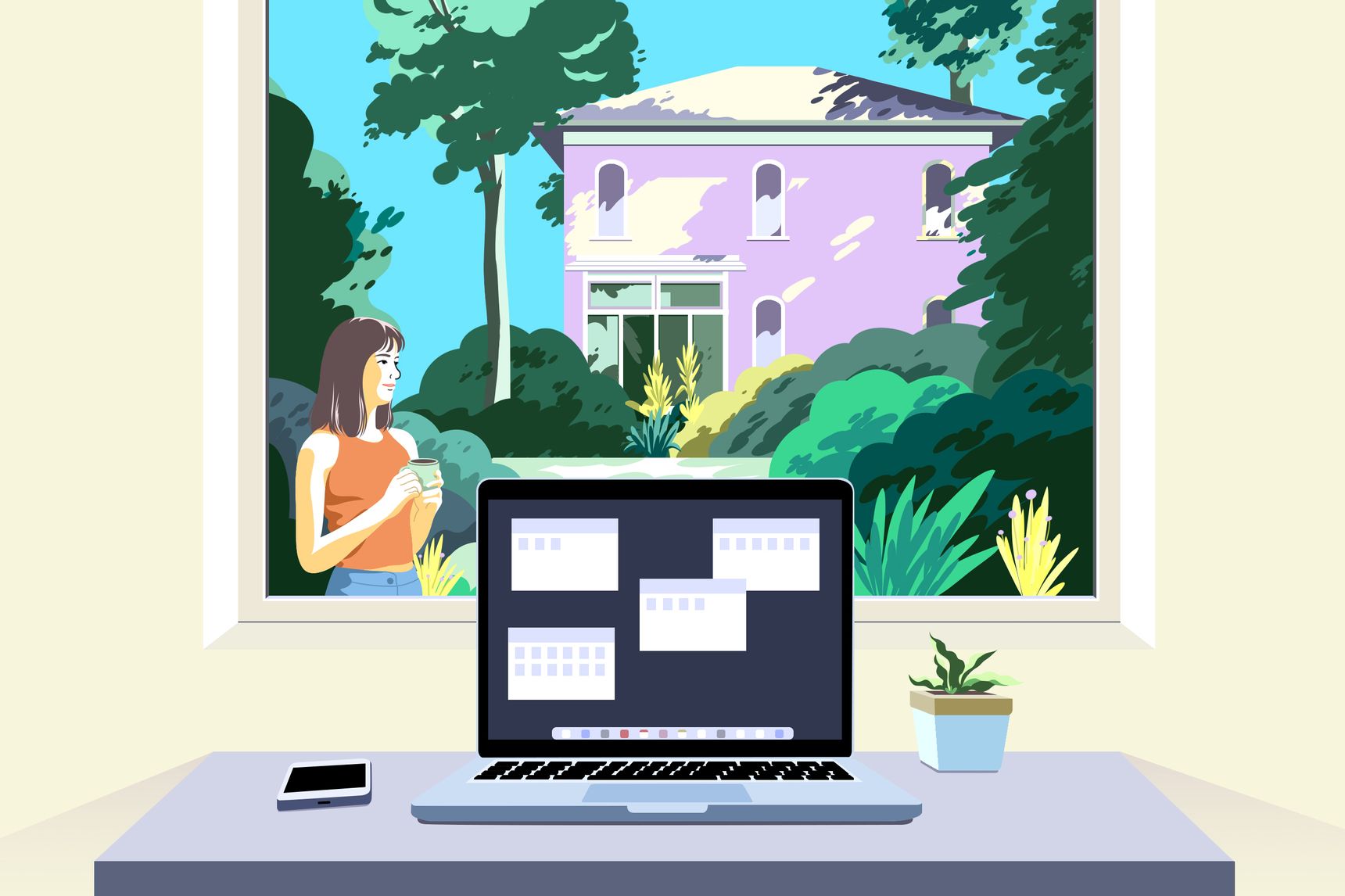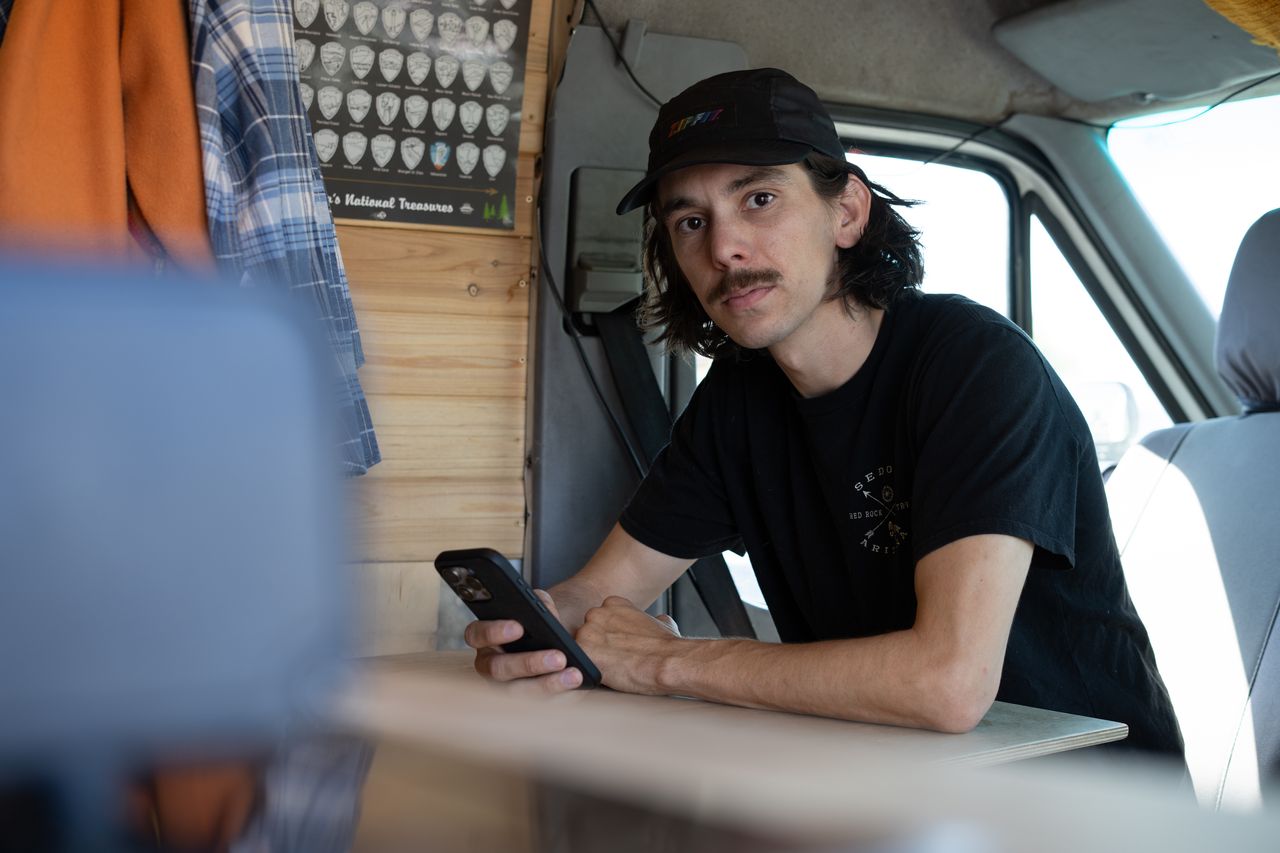Why Workers Should Go Take A Hike
The ability to be outside is a powerful argument for a hybrid workplace. It can improve well-being, as well as productivity, research shows.
I was recently speaking with one of my former students about the decisions that leaders are facing as they bring employees back to the office on a full-time or hybrid basis. This student remarked that one overlooked benefit of working from home is that it gives employees the ability to access the outdoors during the workday.
He described how his remote workdays included moments in which he was able to go into his backyard and enjoy a nature break—something he could never do when he was in the office all the time. He said these outdoor respites left him feeling more refreshed than his indoor breaks.
His observations resonated with me, because they aligned with my own research about the intersection of the worlds of work and nature, and with the compelling evidence that exposure to nature provides myriad benefits to individuals—benefits that don’t stop when the workday begins.
The link to the current discussion about remote and hybrid work is obvious: Employees who hold jobs that are able to be made hybrid—namely office workers—are the same group of workers who often have limited access to nature during their workdays in sealed buildings. Moreover, given that these buildings are often located in urban areas, even when employees are able to get outside, the quality of their exposure to nature is often low, occurring alongside distractions that impede the enjoyment of nature, like traffic noise.
This is where flexible work comes in. When employees work from home, they can open their windows and breathe in fresh air. In between video calls, they can step outside and feel the breeze and hear birds. After lunch, they can take a walk to a nearby park, or work outdoors for a few hours. In short, in ways small and large, working remotely permits deeper immersion in nature compared with being in the office.
And this immersion matters. Contact with nature improves people’s moods, sharpens people’s cognitive abilities, makes them more cooperative, reduces burnout and enhances employees’ productivity. By allowing workers more meaningful access to nature through flexible work schedules, leaders provide employees with a work arrangement that facilitates higher well-being and performance.
These nature-based benefits of flexible work for workers and organizations take on added value considering recent research has shown that exposure to nature outside of work hours can contribute to employee performance when they return to work. In one study, my co-authors and I provided evidence that to the extent that employees spent time outdoors before and after work, they were in better moods when they arrived at work, which fueled higher work effort later in the day. This suggests that contact with nature not only has the potential to enhance employees’ well-being and performance while they work remotely, but to also positively affects their feelings and behaviours when they return to the office.
Companies, of course, could also redesign their in-person workspaces to provide employees with deeper immersion in nature—something many companies are embracing by adding such things as windows that open, green spaces on rooftops, and hiking trails on corporate campuses. But such efforts, while valuable, are expensive. It is much less costly—and quicker—to incorporate remote work into employees’ schedules.
One final benefit of bringing employees into deeper contact with nature relates to organizational sustainability efforts. In particular, there is an emerging link between employees’ contact with nature and their subsequent engagement in sustainability-related behaviours. Research shows that when individuals come into contact with nature in a given week, they are more likely to engage in sustainability-related behaviours that may be in alignment with organizational sustainability goals when they get back indoors.
A couple of caveats are warranted. First, individuals differ in the extent to which they like the outdoors; investments in contact with nature will likely have little effect on employees who feel no connection to the natural world. In addition, however beneficial interactions with nature are, they can’t make up for serious job deficiencies in terms of things like fair pay and respectful treatment. It would ring hollow and backfire to tell overworked employees to simply go outdoors to avoid their impending burnout.
There are no one-size-fits-all answers when it comes to redesigning jobs in a postpandemic era. But when weighing the benefits of hybrid work and other flexible work arrangements, leaders shouldn’t forget part of the answer can be found just outside their doors.
Reprinted by permission of The Wall Street Journal, Copyright 2021 Dow Jones & Company. Inc. All Rights Reserved Worldwide. Original date of publication: July 13, 2022.
 Copyright 2020, Dow Jones & Company, Inc. All Rights Reserved Worldwide. LEARN MORE
Copyright 2020, Dow Jones & Company, Inc. All Rights Reserved Worldwide. LEARN MORE
This stylish family home combines a classic palette and finishes with a flexible floorplan
Just 55 minutes from Sydney, make this your creative getaway located in the majestic Hawkesbury region.
As Paris makes its final preparations for the Olympic games, its residents are busy with their own—packing their suitcases, confirming their reservations, and getting out of town.
Worried about the hordes of crowds and overall chaos the Olympics could bring, Parisians are fleeing the city in droves and inundating resort cities around the country. Hotels and holiday rentals in some of France’s most popular vacation destinations—from the French Riviera in the south to the beaches of Normandy in the north—say they are expecting massive crowds this year in advance of the Olympics. The games will run from July 26-Aug. 1.
“It’s already a major holiday season for us, and beyond that, we have the Olympics,” says Stéphane Personeni, general manager of the Lily of the Valley hotel in Saint Tropez. “People began booking early this year.”
Personeni’s hotel typically has no issues filling its rooms each summer—by May of each year, the luxury hotel typically finds itself completely booked out for the months of July and August. But this year, the 53-room hotel began filling up for summer reservations in February.
“We told our regular guests that everything—hotels, apartments, villas—are going to be hard to find this summer,” Personeni says. His neighbours around Saint Tropez say they’re similarly booked up.
As of March, the online marketplace Gens de Confiance (“Trusted People”), saw a 50% increase in reservations from Parisians seeking vacation rentals outside the capital during the Olympics.
Already, August is a popular vacation time for the French. With a minimum of five weeks of vacation mandated by law, many decide to take the entire month off, renting out villas in beachside destinations for longer periods.
But beyond the typical August travel, the Olympics are having a real impact, says Bertille Marchal, a spokesperson for Gens de Confiance.
“We’ve seen nearly three times more reservations for the dates of the Olympics than the following two weeks,” Marchal says. “The increase is definitely linked to the Olympic Games.”

Getty Images
According to the site, the most sought-out vacation destinations are Morbihan and Loire-Atlantique, a seaside region in the northwest; le Var, a coastal area within the southeast of France along the Côte d’Azur; and the island of Corsica in the Mediterranean.
Meanwhile, the Olympics haven’t necessarily been a boon to foreign tourism in the country. Many tourists who might have otherwise come to France are avoiding it this year in favour of other European capitals. In Paris, demand for stays at high-end hotels has collapsed, with bookings down 50% in July compared to last year, according to UMIH Prestige, which represents hotels charging at least €800 ($865) a night for rooms.
Earlier this year, high-end restaurants and concierges said the Olympics might even be an opportunity to score a hard-get-seat at the city’s fine dining.
In the Occitanie region in southwest France, the overall number of reservations this summer hasn’t changed much from last year, says Vincent Gare, president of the regional tourism committee there.
“But looking further at the numbers, we do see an increase in the clientele coming from the Paris region,” Gare told Le Figaro, noting that the increase in reservations has fallen directly on the dates of the Olympic games.
Michel Barré, a retiree living in Paris’s Le Marais neighbourhood, is one of those opting for the beach rather than the opening ceremony. In January, he booked a stay in Normandy for two weeks.
“Even though it’s a major European capital, Paris is still a small city—it’s a massive effort to host all of these events,” Barré says. “The Olympics are going to be a mess.”
More than anything, he just wants some calm after an event-filled summer in Paris, which just before the Olympics experienced the drama of a snap election called by Macron.
“It’s been a hectic summer here,” he says.

AFP via Getty Images
Parisians—Barré included—feel that the city, by over-catering to its tourists, is driving out many residents.
Parts of the Seine—usually one of the most popular summertime hangout spots —have been closed off for weeks as the city installs bleachers and Olympics signage. In certain neighbourhoods, residents will need to scan a QR code with police to access their own apartments. And from the Olympics to Sept. 8, Paris is nearly doubling the price of transit tickets from €2.15 to €4 per ride.
The city’s clear willingness to capitalise on its tourists has motivated some residents to do the same. In March, the number of active Airbnb listings in Paris reached an all-time high as hosts rushed to list their apartments. Listings grew 40% from the same time last year, according to the company.
With their regular clients taking off, Parisian restaurants and merchants are complaining that business is down.
“Are there any Parisians left in Paris?” Alaine Fontaine, president of the restaurant industry association, told the radio station Franceinfo on Sunday. “For the last three weeks, there haven’t been any here.”
Still, for all the talk of those leaving, there are plenty who have decided to stick around.
Jay Swanson, an American expat and YouTuber, can’t imagine leaving during the Olympics—he secured his tickets to see ping pong and volleyball last year. He’s also less concerned about the crowds and road closures than others, having just put together a series of videos explaining how to navigate Paris during the games.
“It’s been 100 years since the Games came to Paris; when else will we get a chance to host the world like this?” Swanson says. “So many Parisians are leaving and tourism is down, so not only will it be quiet but the only people left will be here for a party.”
This stylish family home combines a classic palette and finishes with a flexible floorplan
Just 55 minutes from Sydney, make this your creative getaway located in the majestic Hawkesbury region.






















